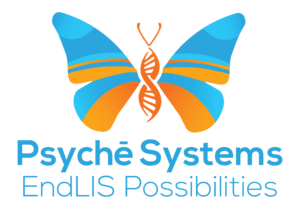As demand for accurate laboratory results increases, labs are turning to Laboratory Information Systems (LIS) to enhance efficiency and improve turnaround times. Similarly, LIMS (laboratory information management systems) are robust healthcare software solutions used by labs to process, store, and manage patient data, including names and test results. Lab facilities often integrate LIMS with other healthcare software, such as electronic healthcare records (EHR) and billing systems for sample tracking and data organization. However, while combining billing functionality with a LIMS system may seem more convenient, it has drawbacks, and separating the two is often a better idea for some labs.
As Peter Drucker puts it, “Efficiency is doing better than what is already being done.” While some labs are rushing to combine LIMS with billing functionalities, it may be wise to analyze your lab’s needs and consider a different approach. Keeping your billing systems separated from the LIMS enhances flexibility, adaptability, and scalability, leading to better financial management and operational efficiency in your lab. In this article, we’ll look at the benefits of this approach.
Role of Billing Functionality in LIMS System
Billing software automates service billing and submitting claims to insurance providers by capturing patient data and noting what services they received during their visit. Without an efficient billing system, laboratories may lose revenue by neglecting to capture services provided or delaying reimbursements from insurers due to coding issues. A LIMS, on the other hand, helps lab officials and other treating physicians capture, store, and track patient data for enhanced diagnosis and treatment.
Combining the two systems offers two advantages for lab facilities:
- Streamlining the billing process.
- Enhancing accuracy and efficiency of financial tasks.
However, an all-in-one system may limit LIMS performance and impact other significant lab operations and compliance requirements.
Drawbacks of an All-in-One LIMS
Given the unique nature of lab operations, shopping for an all-in-one LIMS may seem like a good idea. However, several issues may make you re-evaluate your reasons for combining the two systems. Integrating billing functionality into the LIMS may not be the best option for your lab due to the following reasons:
- Combining billing functionality and LIMS is a complex process that often creates customization challenges.
- These customization challenges could impact system performance and usability.
Most of the challenges created by combining billing functionalities and LIMS arise due to the unique billing requirements of different laboratories. For example, the billing requirements for a clinical services laboratory may differ from those of a diagnostic laboratory service. An all-in-one LIMS can also create conflicts between laboratory management staff and billing departments. Finally, combining billing functionalities and LIMS may lead to compliance and regulation complexities due to the difference in regulatory standards and billing practices.
Benefits of Using a Psyche LIMS System
Specialization and Focus
Psyche does not include billing functionality, which allows us to focus entirely on developing and refining the core laboratory software features. This focus makes our LIMS more robust and specialized for laboratory management, data tracking, and analysis without the distractions or complexities of billing integration.
Simplified System
Separating billing from the LIS/LIMS streamlines system architecture and design, providing a cleaner and more user-friendly interface. This separation of systems makes it easier for laboratory staff to navigate and utilize the LIMS more effectively.
Reduced Complexity
Combining billing and laboratory management features could introduce needless complexity that can impact data integrity, security, and system stability. Psyche keeps the billing aspects separate, which mitigates potential risks and enhances the stability and accuracy of critical laboratory data.
Customization and Integration
Laboratories have diverse billing needs that often involve integration with other accounting and billing systems. A standalone LIS/LIMS can be easily customized and integrated with external billing systems to meet the unique requirements of different laboratories.
Flexibility for Clients
In most cases, your laboratory will have existing billing systems that you may want to continue using. A LIS/LIMS without integrated billing allows you to choose and maintain your preferred billing solution while still benefiting from the advanced laboratory management features of your LIMS.
Ease of Implementation and Upgrades
The exclusion of billing functionalities simplifies the implementation and upgrade process for the LIS/LIMS. It reduces the complexity of user training, system testing, and quality assurance, providing a smoother transition for you and your staff.
Cost-Effectiveness
Developing and maintaining billing interfaces can be resource-intensive and costly. By focusing solely on laboratory management features, you can allocate precious resources more efficiently to enhance the core capabilities of the LIS/LIMS.
Scalability
Laboratories vary in size and complexity. These differences give each lab management needs that may change depending on various factors. A standalone LIS/LIMS can scale to meet the specific demands of your laboratory without being constrained by billing-related features.
Learn More About the Benefits of a Standalone LIS/LIMS
An all-in-one LIMS system is not always the best option. Combining too many systems may create customization issues that limit system efficiency, create conflicts between the billing department and lab management, and cause compliance or regulatory complexities.
Psyche helps you overcome these challenges by creating a standalone LIMS that increases flexibility, adaptability, and scalability for operational efficiency and better financial management. Contact us today to learn more or request a demo.
Image by DCStudio on Freepik

